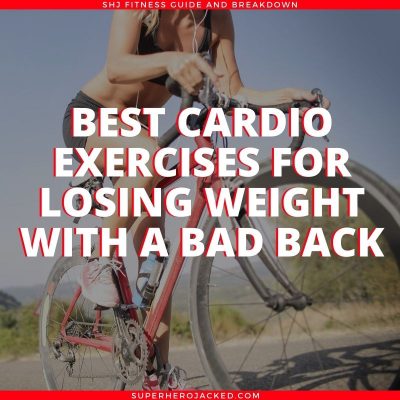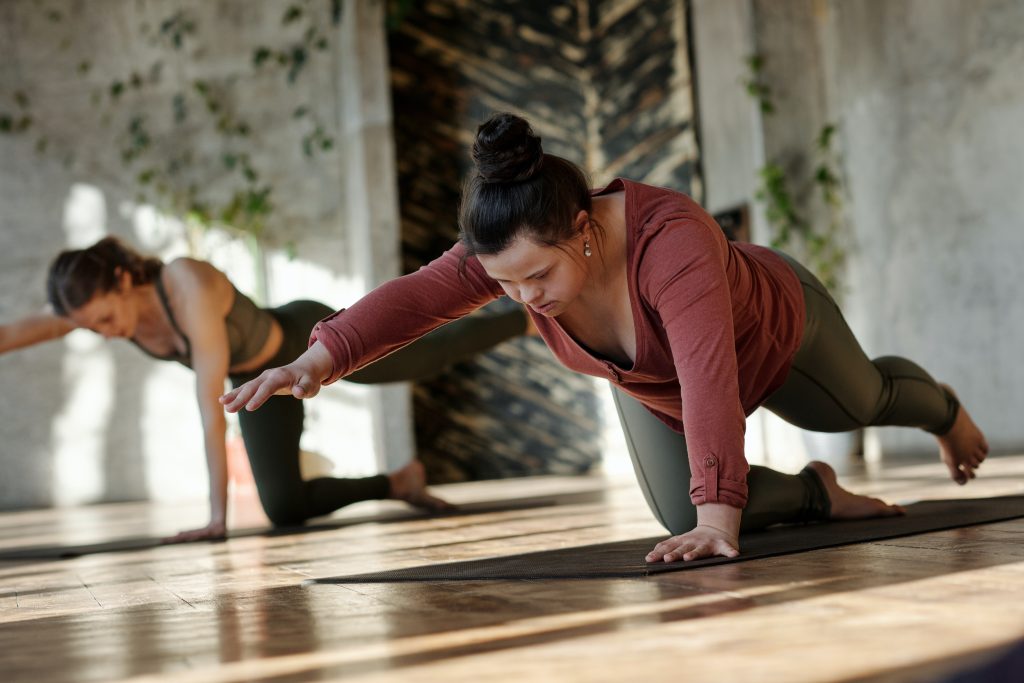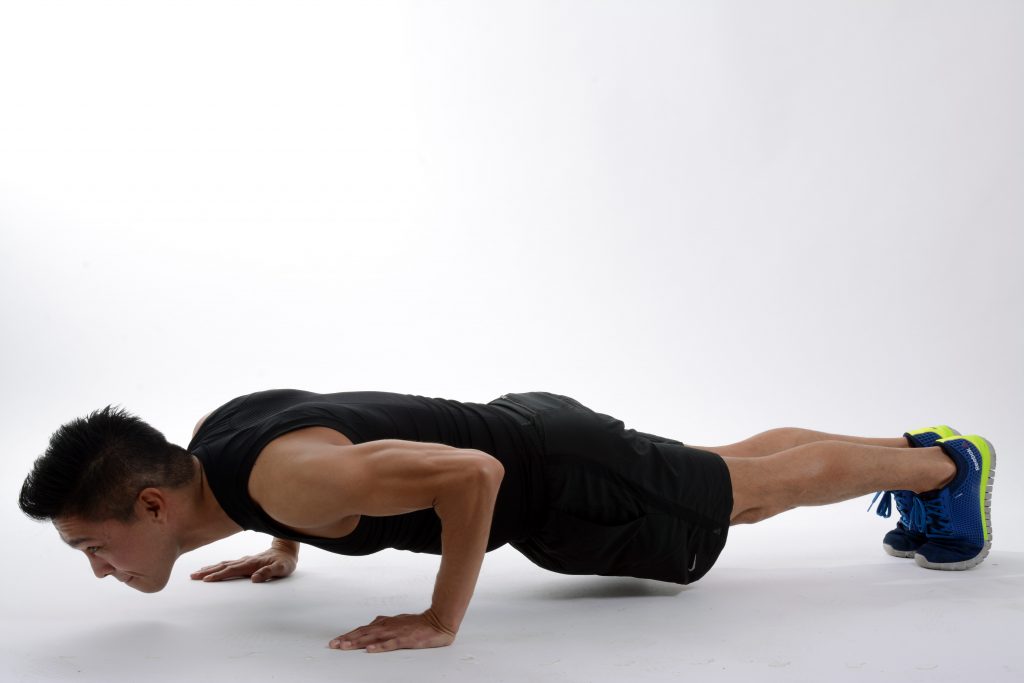Last updated on December 12th, 2022 at 03:40 pm
 You may have heard that excess body weight can contribute to back problems. One thing that any medical professional worth his or her degree will tell you is that losing weight is ideal for general health— including back pain. Here’s the deal, obesity is becoming more and more common. And the numbers on back pain are startling— 80% of Americans will visit the doctor for back pain at some point in their lives.
You may have heard that excess body weight can contribute to back problems. One thing that any medical professional worth his or her degree will tell you is that losing weight is ideal for general health— including back pain. Here’s the deal, obesity is becoming more and more common. And the numbers on back pain are startling— 80% of Americans will visit the doctor for back pain at some point in their lives.
Losing that extra weight you’re carrying can help prevent back problems in the future and alleviate them in the present. Which is all fine and good, but what if you already have back pain? How are you supposed to exercise if you can barely bend over without a sharp pain in your back? Have no fear because we’ve got your back (see what I did there?) with the best cardio exercises for losing weight with a bad back!
Safety Tips To Consider
Before we get to the actual exercises, I want to make a few things clear. I don’t want you to run out and start blasting weights at the gym if it’s going to cause you pain. You’ll want to ease into an exercise routine that isn’t going to have you in pain while you’re doing it. That’s not sustainable. So check out these tips before you get started:
- Take is slow and steady at first.
- Pay attention to your body.
- Choose low- or moderate-impact exercises (we’ll discuss further below).
- If you have an acute low back injury, talk to a doctor or chiropractor before starting any sort of exercise program.
- If you’re unsure what’s causing your back pain, try these natural ways to get rid of back pain (but don’t forget about exercise).
And remember, the recommended amount of exercise per week is two and a half hours. That’s just 30 minutes a day, five days a week. So set yourself a weekly (or daily) goal and stick to it!
Best Cardio Exercises for Losing Weight with a Bad Back
Exercise comes with all sorts of near-immediate benefits. So if you’re dreading the upcoming cardio session, remember these few things:
- Exercise activates endorphins, which are the body’s natural painkillers.
- Cardio activates increased blood flow, which helps the circulation to your back, which can help relieve some of the pain and speed up the healing process.
- If you exercise enough, your overall pain threshold will likely increase, making life that much better.
Walking
I know what you’re thinking: ‘Hey, I walk every day! Alright!’ But I’m not talking about walking to the car from the office, or from the couch to the fridge (my personal favorite). In fact, I’m not even talking about walking at a normal, everyday pace.
No, what I’m talking about is closer to Speed Walking. Only you don’t have two wear funny clothes and swing your hips with every step (unless you want to). Some people call it Exercise Walking, and the whole idea is to get your heart rate up for at least 10 consecutive minutes.
When your heart rate is up, the magic starts to happen in your body. You begin to burn more calories, circulate more blood, and release endorphins. Even better if you can keep your heart rate up for longer than 10 minutes, but don’t overdo it if you’re just getting into (or back into) exercising again.
Luckily, Exercise Walking is pretty low impact and easy to maintain. If you have access to a treadmill, you can set it to a speed somewhere between walking and jogging. If not, just head outside and make your own pace!
Swimming and Water Aerobics
Water aerobics may bring images into your mind of oldsters at the local Y moving in slow, serene motions as little waves lap at the pool walls. Personally, that sounds pretty good, but if it’s not for you, don’t knock it until you try it.
Water Aerobics is the lowest of the low-impact options on this list, and it’s great if other exercise activities cause you too much pain. But remember, the idea is still to get your blood flowing and your heart rate up, not to just sit in the pool!
If you’re not up there in years yourself, you may want to try swimming laps. It’s a great way to work your whole body and help you lose weight. There’s really no right or wrong way to swim laps. You can switch up the way you swim halfway through if you want. Just get those limbs moving and muscles working.
Biking
Whether you do it on a stationary bike or you’re actually riding around your neighborhood (don’t forget to wear a helmet), biking is a fantastic low-impact cardio exercise. A couple of things to consider before you go out and buy equipment:
- Riding a bike outside can be a little jarring on the spine with potholes, rocks, branches, and pebbles. It just depends on your back pain. Plus you have to watch out for cars!
- Cycling in a gym or your own home on a stationary bike is safer than braving the mean streets of your neighborhood.
- Stationary bikes come with preloaded workout plans for you to choose from. They can keep you motivated and track your progress.
- No matter the type of bike, make sure to use proper form when riding.
Elliptical Machines
Another low-impact option for losing weight with a bad back is elliptical exercise. If you use one with moving handles, you can get a whole-body workout going. Since your feet move in an oval motion, elliptical exercises lower the impact on your joints, making them ideal for people with joint pain or back pain.

Plus, like treadmills and stationary bikes, you can choose from preloaded settings for your particular workout needs. You set them to higher resistance to really get your heart going, or lower resistance for when you’re warming up or taking it easy.
Yoga
When we think of cardio exercises, yoga isn’t generally on the list, but it should be. Yoga is such a versatile exercise approach that some incredibly fit and strong people only do yoga. You can get your heart rate up quickly with some yoga moves, or you can focus on stretching your muscles and getting your body in sync. Plus, there’s a wealth of free yoga videos on YouTube and tons of digital yoga classes happening every day.
Here are a couple of yoga moves that are commonly used to help back pain:
Bird Dog Yoga Move
- Start on all fours with your hands under your shoulders and your knees under your hips.
- Your spine should be neutral.
- Extend your right arm straight out in front of you while lifting your left leg straight out behind you.
- Hold for five seconds.
- Release and slowly bring your arm and leg back into starting position.
- Repeat with your other arm and leg (left arm and right leg).
- Repeat all of the above 10 to 15 times.

As you do this exercise, focus on keeping your core engaged and your hips and shoulders parallel to the floor. Keep your spine neutral throughout and your chin tucked down, eyes to the floor.
Bridge Pose
- Start laying on your back with your knees pointing at the ceiling, feet parallel, and arms at your sides.
- Activate your core, glute muscles, and thighs to bring your hips off the floor and toward the ceiling.
- Draw your shoulder blades together and your head resting on the floor.
- Hold for 10 to 15 seconds.
- Release and gently bring your hips back to the floor.
- Repeat 10 to 15 times.
When you are at the top of your “bridge,” your feet should be under your knees, and you should be squeezing your glutes the whole time. Your knees should stay parallel and not touch. You can hold it for as long as is comfortable every time. Try to increase your hold time regularly.
One Last Exercise: Resistance Push-Up
This next one isn’t really a yoga move, but it is great for engaging muscle throughout your body while avoiding any high-impact or twisting motions.
- Start in the normal push-up position: feet together, legs straight, hands slightly wider than the shoulders, arms extended.
- Engage your core, back, glutes, and arm muscles to keep your body straight.
- Lower yourself down toward the floor very slowly— usually to the count of 5 or 10.
- Once all the way down, help yourself back up with your knees and hands.
- Resume starting position.
- Repeat as many times as you can or until you can no longer lower yourself in over 5 seconds.

As you can tell, there’s really no “push-up” in this. You’re just using your muscles against the resistance of gravity to lower your body to the floor under control. Regular push-ups can be hard on the back, so the resistance push up is good for working many of your muscle groups without hurting your back. If you find this too hard at first, you can perform the move with your knees on the floor until you’ve built up the muscle (and burned the fat) to do it the way described above.
That should be enough to get you started. Remember that even a little movement is better than nothing at all. Aim for at least 30 minutes of exercise five days a week!
About Dr. Brent Wells
Dr. Brent Wells is a graduate of the University of Nevada where he earned his Bachelor of Science degree before moving on to complete his doctorate from Western States Chiropractic College. He founded Better Health Chiropractic & Physical Rehab in 1998. He became passionate about being a chiropractor after his own experiences with hurried, unprofessional healthcare providers. The goal for Better Health Chiropractic is to treat Anchorage patients with care and expertise while providing them with a better quality of life through professional treatment.
Join The Superhero Academy and start unleashing your inner SuperHuman.

SUPERHUMAN SECRETS V.2
NOW UPDATED AND EXPANDED WITH A NEW SECTION & SEVEN BONUSES
USD$29 USD$14.95

